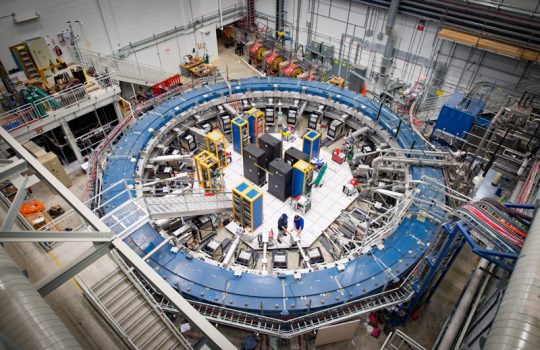First-Person Science: Chris Polly on muon physics
From the Department of Energy, Aug. 11, 2020: Fermilab scientist Chris Polly shares his love of physics, the importance of muons, a short history of scientists’ quest to measure how the muon wobbles in a magnetic field, and his journey to becoming leader of the Muon g-2 experiment.




